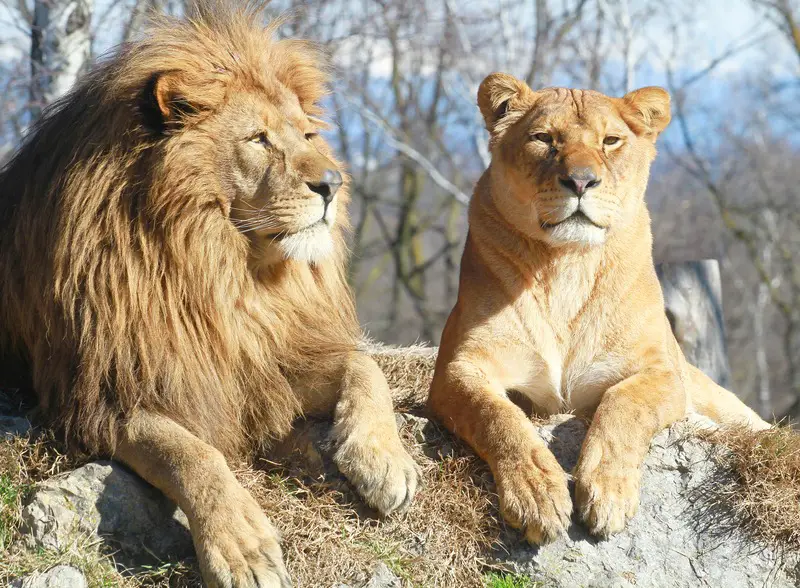A 14-year-old girl was killed by a lion that escaped from Nairobi National Park in Kenya on Saturday night, April 19, 2025, according to wildlife authorities. The incident occurred when the lion entered a residential compound on the outskirts of the Kenyan capital after leaping over a makeshift fence.
The teenager, whose name has not been released, was with a friend inside the house when the lion attacked and dragged her away. Her friend immediately alerted authorities, prompting a response from the Kenya Wildlife Service (KWS).
“KWS rangers and response teams were swiftly mobilized and traced bloodstains leading to the Mbagathi River, where the girl’s body was recovered with injuries on the lower back,” the agency said in a statement.
The attack took place at a residential compound located on a ranch bordering the southern edge of Nairobi National Park. The park, situated just six miles from downtown Nairobi, is home to a variety of wildlife including cheetahs, leopards, lions, buffalo, and giraffes.
Following the incident, KWS officials set a trap and deployed search teams to find the lion. The wildlife agency has also implemented additional security measures to prevent further attacks in the area.
According to KWS, the attack likely resulted from a “scarcity of prey in her natural range,” and there was no evidence of provocation from the victims.
Nairobi National Park is fenced on three sides to prevent animals from roaming into the city, but its southern border remains open to allow wildlife to migrate in and out of the park. This design, while beneficial for animal migration patterns, creates challenges in managing human-wildlife conflict in the region.
The incident is not isolated. Just a day earlier, on Friday, a 54-year-old man was killed by an elephant in central Nyeri County, approximately 80 miles north of Nairobi. The man was reportedly grazing livestock in a forest when the elephant attacked.
These consecutive fatal attacks highlight the ongoing tensions between human settlements and wildlife in Kenya. While lions frequently come into conflict with humans in the country, particularly over livestock, fatal attacks on people are rare.
Last year, a similar incident occurred when a Rottweiler dog was snatched by a lion from another home near the national park, indicating a pattern of wild animals venturing into residential areas.
Paula Kahumbu, head of the WildlifeDirect conservation group, stated that the consecutive deaths were not isolated incidents. She indicated that KWS needs to enhance risk assessments and ensure accurate, real-time communication of wildlife movement and behavior, especially in known high-risk areas such as Savannah Ranch.
Kahumbu added that all lodges, camps, and residential developments near wildlife reserves should be “equipped with anti-predator deterrent systems — including lights, alarms, secure fencing, and anti-predator sprays. Prevention is our first and best line of defense.”
KWS is reportedly working with local law enforcement and communities to enhance safety measures and reinforce security to protect people living near protected wildlife areas. The organization has mentioned that these attacks are linked to broader ecological pressures and human encroachment on wildlife habitats.
In response to growing concerns, KWS is also exploring the use of improved security measures, including electric fencing and AI systems, to warn residents of nearby animal movements. These technological solutions aim to provide early warnings to communities about potential wildlife threats.
This is not the first time lions have escaped from Nairobi National Park. In 2021, a young male lion wandered into a residential area in Ongata Rongai, causing panic among locals. KWS successfully captured and returned the lion to the park on that occasion.
Similar incidents occurred in previous years when several lions escaped from the park and wandered into the city.
Conservationists argue that lions inhabited these areas before human settlements expanded, and that encroachment of residential developments into wildlife habitats is a major factor in these conflicts. The loss of habitat for lions in Kenya has led to increased encounters between the animals and humans, putting pressure on conservation efforts.
KWS has stated that addressing human-wildlife conflict requires continued investment in mitigation strategies through strategic interventions, early warning systems, and strengthened collaboration with affected communities.











